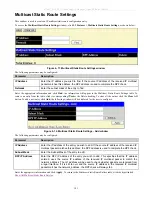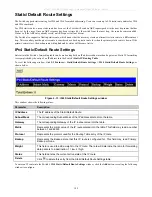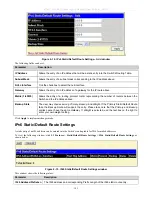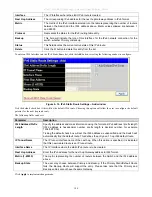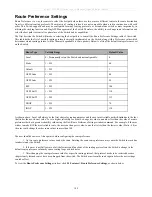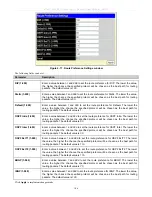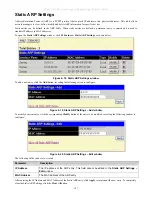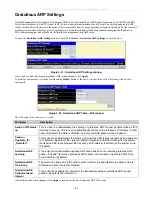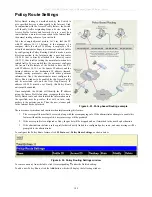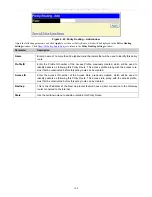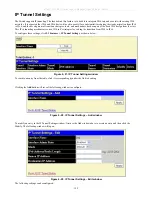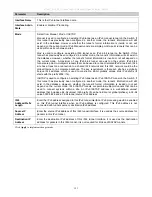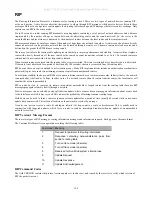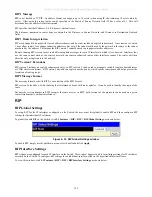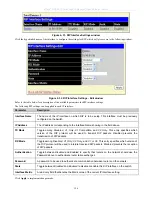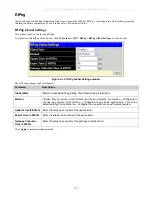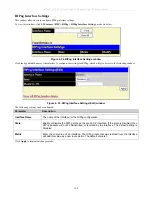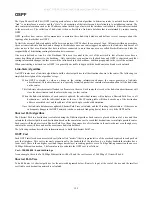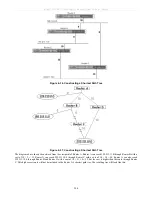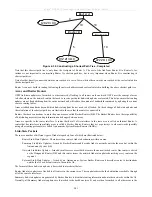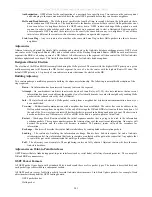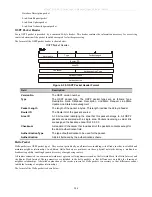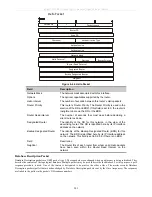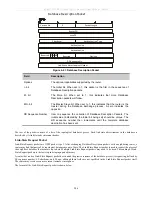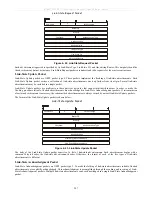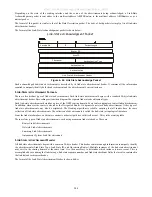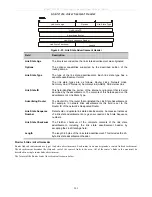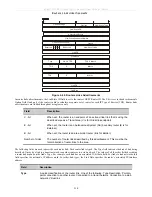
xStack
®
DGS-3600 Series Layer 3 Managed Gigabit Ethernet Switch
RIP 1 Message
RIP is not limited to TCP/IP. Its address format can support up to 14 octets (when using IP, the remaining 10 octets must be
zeros). Other network protocol suites can be specified in the Family of Source Network field (IP has a value of 2). This will
determine how the address field is interpreted.
RIP specifies that the IP address, 0.0.0.0, denotes a default route.
The distances, measured in router hops are entered in the Distance to Source Network, and Distance to Destination Network
fields.
RIP 1 Route Interpretation
RIP was designed to be used with classed address schemes, and does not include an explicit subnet mask. An extension to version
1 does allow routers to exchange subnetted addresses, but only if the subnet mask used by the network is the same as the subnet
mask used by the address. This means the RIP version 1 cannot be used to propagate classless addresses.
Routers running RIP version 1 must send different update messages for each IP interface to which it is connected. Interfaces that
use the same subnet mask as the router’s network can contain subnetted routes, other interfaces cannot. The router will then
advertise only a single route to the network.
RIP Version 2 Extensions
RIP version 2 includes an explicit subnet mask entry, so RIP version 2 can be used to propagate variable length subnet addresses
or CIDR classless addresses. RIP version 2 also adds an explicit next hop entry, which speeds convergence and helps prevent the
formation of routing loops.
RIP2 Message Format
The message format used with RIP2 is an extension of the RIP1 format:
RIP version 2 also adds a 16-bit route tag that is retained and sent with router updates. It can be used to identify the origin of the
route.
Because the version number in RIP2 occupies the same octet as in RIP1, both versions of the protocols can be used on a given
router simultaneously without interference.
RIP
RIP Global Settings
To setup RIP for the IP interfaces configured on the Switch, the user must first globally enable RIP and then configure RIP
settings for the individual IP interfaces.
To globally enable RIP on the Switch, click
L3 Features >
RIP >
RIP > RIP Global Settings
, as shown below:
Figure 4- 30. RIP Global Settings window
To enable RIP, simply use the pull-down menu, select
Enabled
and click
Apply
.
RIP Interface Settings
RIP settings are configured for each IP interface on the Switch. This window appears in table form listing settings for IP interfaces
currently on the Switch. To configure RIP settings for an individual interface, click on the hyperlinked Interface Name.
To view this window, click
L3 Features > RIP > RIP > RIP Interface Settings
, as shown below:
195

